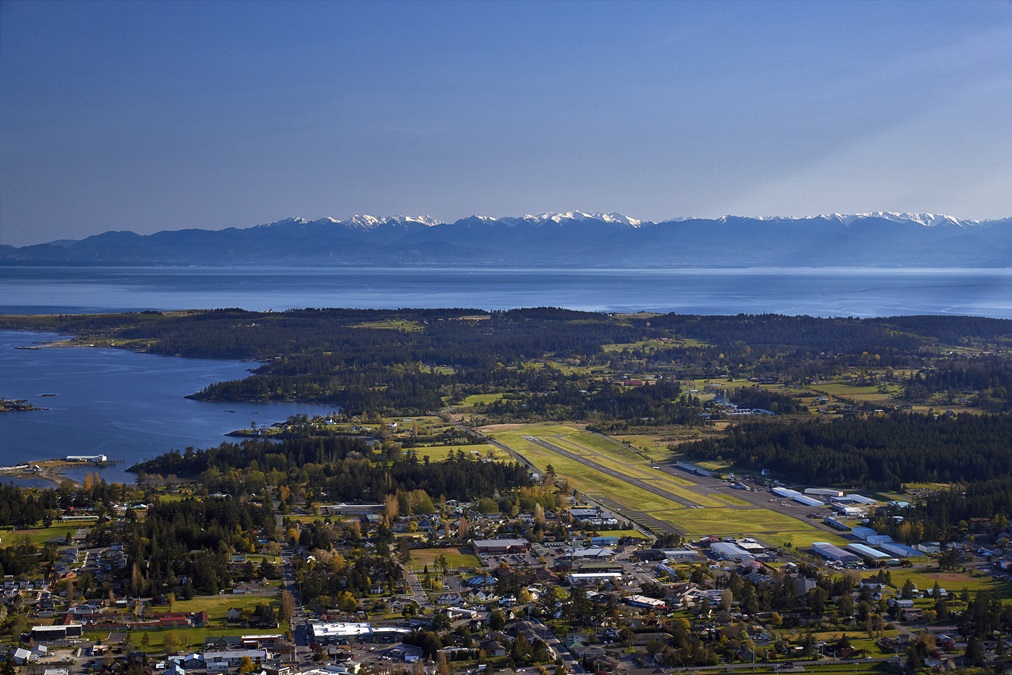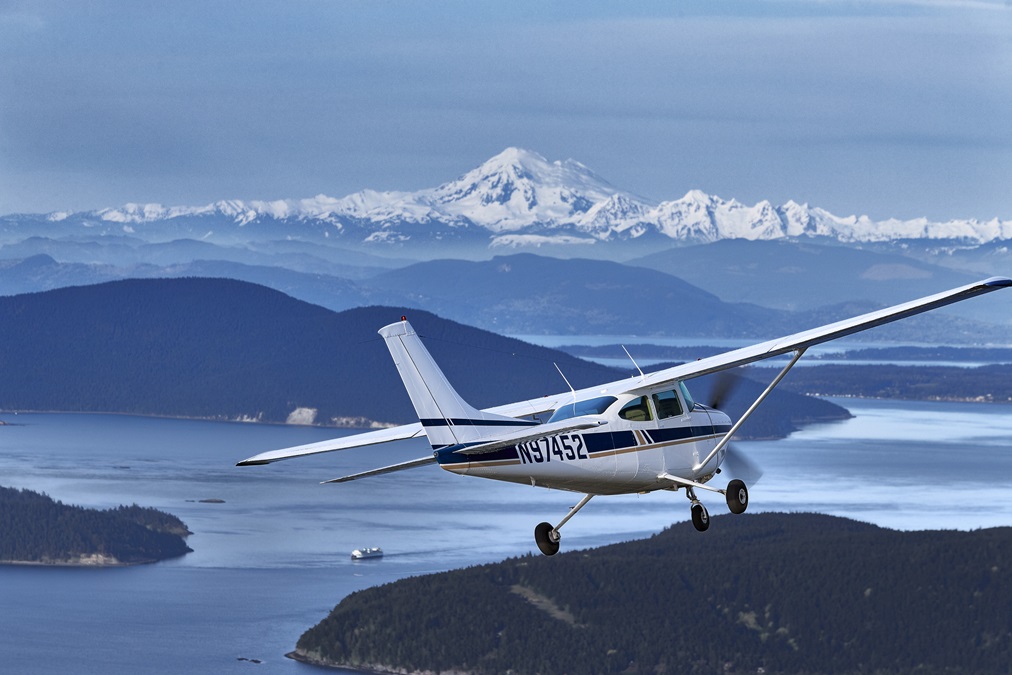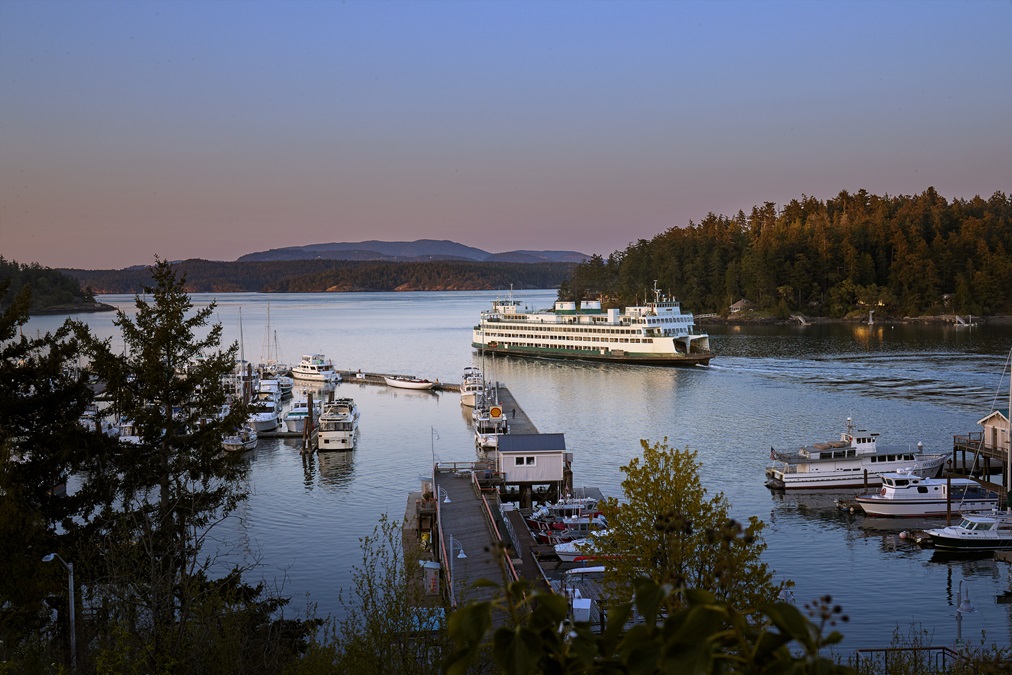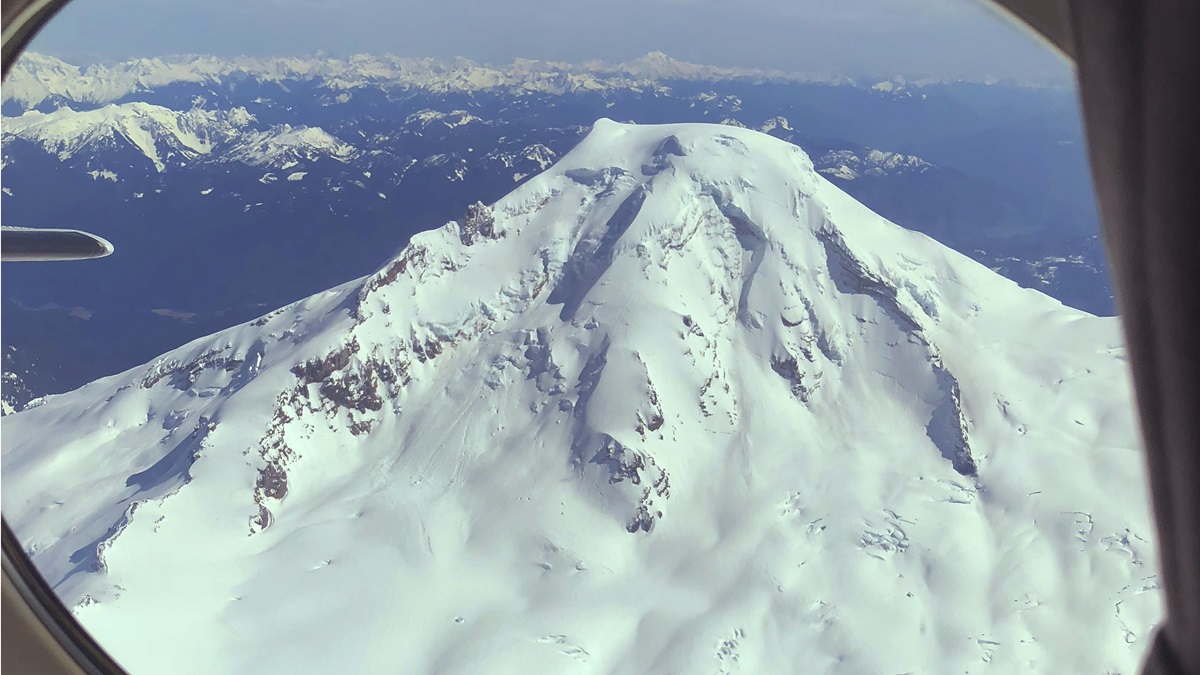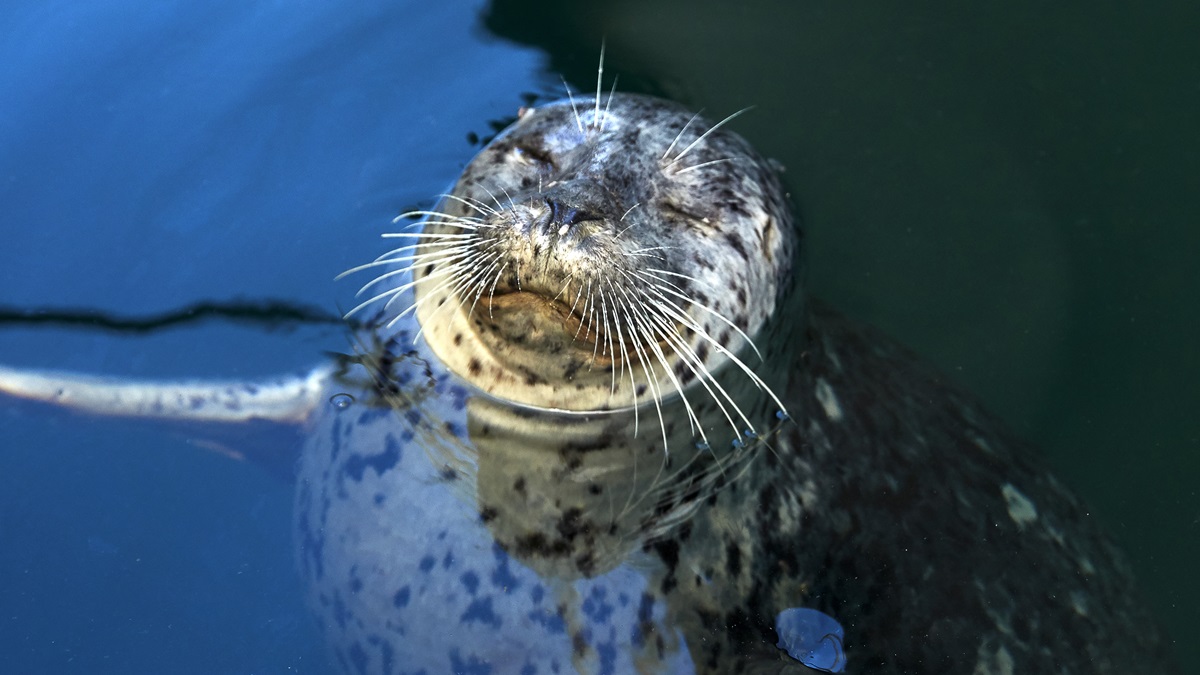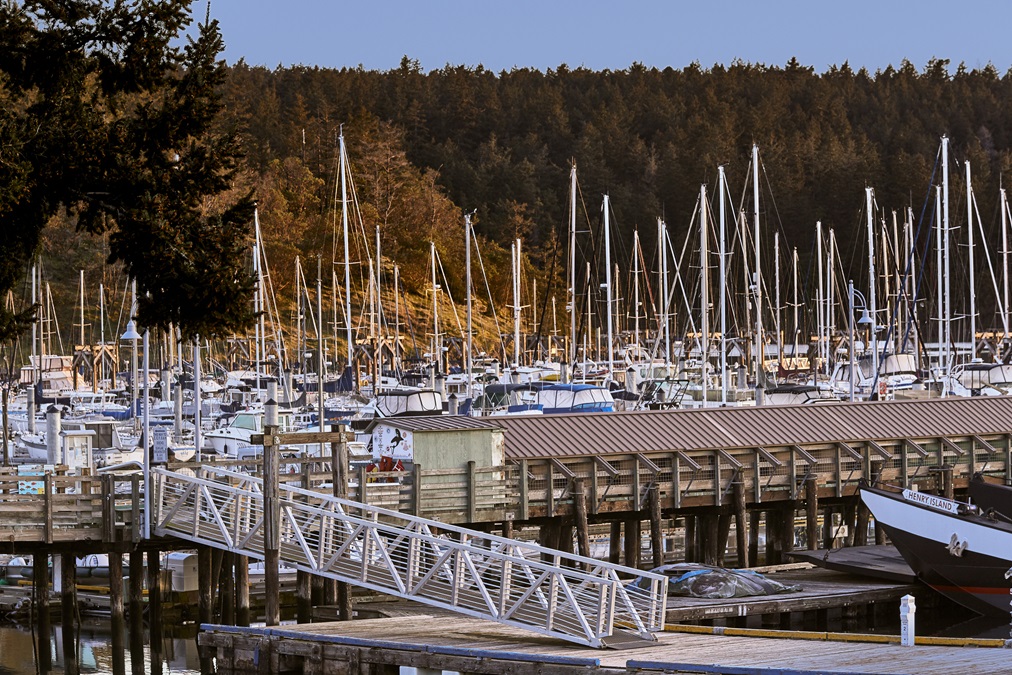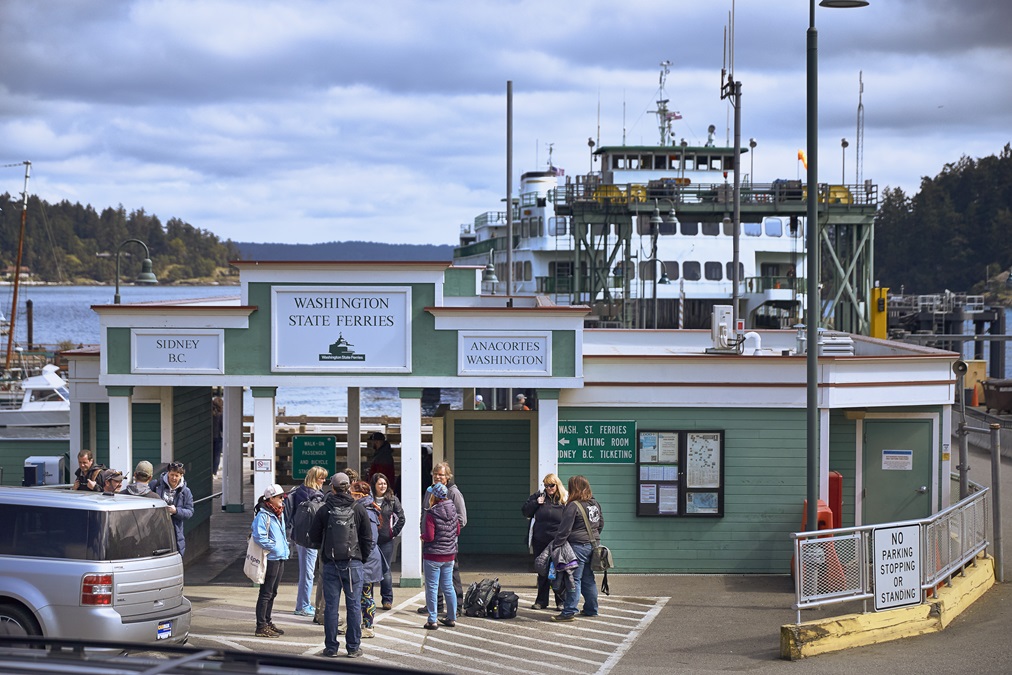Washington: Island hopping
Washington’s San Juan Islands are a pilot’s paradise
“On a good day, as Mike Fizer’s photos illustrate, it’s hard to think of a more beautiful place to fly,” says local pilot Mike Taylor, who flies his Cessna 182 around the islands as part of his job with a local bank. “I believe we’re the only group of protected islands on the West Coast north of Baja. With such natural beauty, it’s hard not to think every flight is pretty special.”
The inhabited San Juan Islands—San Juan, Orcas, Shaw, Lopez, Blakely, Decatur, and Center—are located in the Salish Sea between Anacortes, Washington, and Victoria, British Columbia. Their waters teem with orca, porpoise, sea lions, harbor seals, otters, and salmon. Those waters are also perfect for seaplane flying. Seaplanes provide access to all the islands; however, only San Juan, Orcas, and Lopez have paved public-use runways (others have private grass strips). Those islands also have designated seaplane bases. Kenmore Air is the oldest air carrier here, using Cessna Caravans both on and off floats.
“The San Juans are an alluring archipelago that lies about 70 air miles north-northwest of Seattle, which has been attracting pilots since the 1920s,” says Daniel S. Schwartz, president of the San Juan Pilots Association. “At the northwest corner of our country, adjacent to the Canadian border, the San Juan Islands are an aviator’s paradise. Seven of the islands are big enough to have an airport or turf airstrip—or two.”
The population of about 14,000 people nearly triples during the summer, with many arriving by air or ferry. The late Paul Allen had his home here, as did aviation legend and author Ernest K. Gann (Fate Is the Hunter) and his flying wife, Dodie. Over the decades, many retired airline and military pilots have settled here, swelling the ranks of locally based and visiting general aviation pilots, says Schwartz, who is retired from National Oceanic and Atmospheric Administration. Although there are no official numbers, it’s safe to say pilots make up a good bit of the population—year-round and summer.
‘Going to America’
Residents of the islands have an independent nature, bolstered by the inadvertent snub created by a sign on Anacortes, the mainland location of the ferry to the islands. It reads “Welcome to Washington State” even though the San Juans are part of the state. Islanders say they are “going to America” when they leave the islands. In fact, the San Juans are closer to Canada than the mainland United States—your phone will ping, letting you know international roaming is in effect, if you’re on a ferry to the islands or out whale watching.
The San Juans are also remarkable for their weather. Situated in the Olympic Rain Shadow, there is more sun and less rain here than in Seattle. Some refer to the area as the “Banana Belt” because the Olympic Mountains act as a wall protecting the San Juan Islands from most of the rain that moves into the Pacific Northwest. The San Juans receive half as much rain as Seattle, and the climate is significantly drier and more arid. Temperatures can reach 90 degrees Fahrenheit (although rare) and with above-average humidity, the islands are almost always lush and green. To emphasize that point, lavender grows in this area second only to the lavender grown in France. This herb—known for its relaxing quality—is symbolic of the area, and, there’s a beautiful lavender farm at the heart of San Juan Island.

Getting there
Most visitors to the San Juans use the Washington state ferry system, which operates year-round and accommodates car and bikes. But you must drive 90 minutes from Seattle north to Anacortes (or take a bus from Sea-Tac). The ferry ride is about two hours and can be a relaxing sojourn—or an overcrowded assault to your senses at the height of tourist season. There are indoor and outdoor seating options, a restaurant, and usually convivial stewards and boat captains who enhance the trip by pointing out landmarks and describing the sea life. You could see orca on a ferry trip, but the best possibility is by a chartered whale-watching company.
Friday Harbor and San Juan Island are used interchangeably, but Friday Harbor is the town on San Juan Island, the largest in the archipelago. Unbelievably, there are between 438 and 743 San Juan Islands depending on the tides; 170 are named. The ferry is mostly direct to Friday Harbor although some sailings stop on Lopez, Shaw, and Orcas islands. The town is situated on the harbor, at the eastern foot of the island center. It’s a town punctuated by the deep-throated bellow of the ferry horn.
Flying is truly the best way to get to the islands—whether on your own or by air carrier. Kenmore Air is the oldest continuously operating carrier, but other options include San Juan Airlines, Westwind Aviation, Island Air, and Northwest Seaplanes. The largest public airport is at Friday Harbor and it is a gracious, welcoming port of call for pilots. You can easily walk to town from the airport, although a rental car from close-by M&W is easy to reserve (and you’ll need a car to drive the island’s fascinating and naturally beautiful circumference).
Friday Harbor Airport (FHR) has a rich and interesting history, established in 1982 when the Port of Friday Harbor bought the airfield from local aviator Roy Franklin. The World War II fighter pilot began flying passengers to San Juan Island in 1948, landing on a cow pasture. He purchased a 66-acre lot on the west side of the island and cleared it to create a 2,300-foot runway. He was famous for flying his Stinson 108, and the airport terminal bears his name.
“Because the islands are not connected by bridges, virtually all of the inhabited islands have airfields,” says Taylor. “Traffic in and around the islands can be quite busy with short island hops to deliver freight and people. It’s not unusual for charter pilots to log 15 to 20 takeoffs and landings on a busy day in the summer. There is a common traffic advisory frequencyb for all the islands to help with situational awareness with multiple airfields in proximity, along with significant seaplane traffic from Seattle.”
The Pig War
I’ve been blessed with three trips now to this remote and beautiful area, courtesy of this magazine (“Flying Them Home,” July 2018; “A Day in the Life of America’s Airports,” August 2007), but I had never seen the entirety of San Juan Island. Friday Harbor is an easily walkable town. With its charming restaurants, inviting shops, and expansive views of the harbor and mountains, one could happily stay here and never venture forth throughout the rest of the island. But then you’d miss Roche Harbor, the lavender farm, and the British and American camps. So, photographer Mike Fizer and I set forth to circumnavigate the island. Fizer hates my erratic driving, so I only drove us to Roche Harbor, a small community at the northern tip of the island. A Tacoma lawyer discovered the largest deposit of lime in the northwest there in 1884 and established a lime company and hotel. The lime factory and its docks, warehouse, and piers are no longer in use, but the pretty little harbor town is, as is the Hotel de Haro. Clocks chime on the hour, and music is piped in from speakers along the pier. Fizer wasn’t charmed, but I was. I guess it could get a little fey and somewhat annoying after a while.
Continuing around the island on a pine-tree-bordered, two-lane road, we saw bicyclists and SUVs topped with kayaks, so we followed one vehicle to the “English Camp.” At Smallpox Bay (yes, really—Native Americans named it because when struck with the fever of small pox, they waded into the cool waters) we watched birds skimming along the bay and kayakers paddling the water. It was here that we began to learn the somewhat dubious history of the island and the story of “The Pig War.” According to island history, the longest-running war on American soil took place here. Both the British and the Americans claimed ownership of the island and, in 1845, an American homesteader shot a pig belonging to the Brit’s Hudson Bay Co. Enraged because this was some special pig, the Brits demanded $100 for its death, but the American refused to pay the extraordinary fee. And so ensued dual occupation of San Juan Island, which lasted for nearly 12 years. The English camped at the northern end of the island and the Americans to the south. No shots were fired (except at the pig) and eventually the whole thing fizzled out as British Royal Navy Rear Adm. Robert Baynes was disgusted over “two great nations in a war over a squabble about a pig.”
Islanders say they are “Going to America” when they leave the islands.Fizer and I agreed that the English Camp was perhaps the better of the two (even with the questionable name of the bay), as the American Camp on the southern tip is a wide open field with little natural protection, while the English camp is more secluded. But the views from off to the west are breathtaking; you can see Canada from here.
Whales, salmon, and a seal
You will not go hungry in Friday Harbor. Especially if you enjoy seafood, the cuisine here is wonderful. Locals who live here year-round have carved out their niche, and you can find gourmet selections in nearly every cuisine, from Italian to Mexican or Asian. They make use of the native salmon, oysters, and Dungeness crab in simple ways as well as complex dishes. We enjoyed fresh-out-of-the-bay treats from Friday Harbor Seafood, a floating dock in the Port of Friday Harbor owned by Eric and Brenda Wagner. I literally ran down Fizer to give him a taste of Wagner’s smoked salmon.
For a simply charming experience in Friday Harbor, go see Popeye. She’s a one-eyed seal who frequents the waters around Friday Harbor Seafood. She was first identified in 1995, and in 2005 the Port of Friday Harbor named her the port’s official harbor seal and commissioned a granite sculpture of her. The sculpture is under shady trees in Fairweather Park, which overlooks the marina.
There are resident and transient orca pods that live in the waters all around the islands. The several whale-watching tour companies in Friday Harbor offer varying degrees of opportunities to see the orcas, from big tourist boats to single-person kayaks. It’s a great experience, which I did twice. The first trip was during an uncharacteristic gray rainy day during which the tour guides were hot on the trail of a well-known pod (the orcas are named, and these guides help you identify males, moms, babies, and the characters in the bunch) and we circled and circled and circled until I went belly up and had to be fed saltines and ginger ale (if you get my point). The second time we chased pods into Canadian waters and saw many breech and perform for the boats full of tourists—it’s obvious these orcas know we like to watch them.
Email [email protected]

